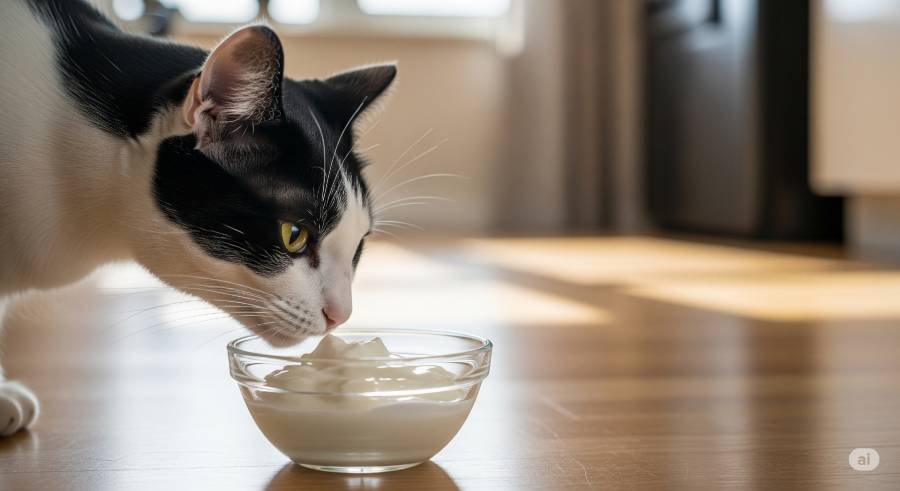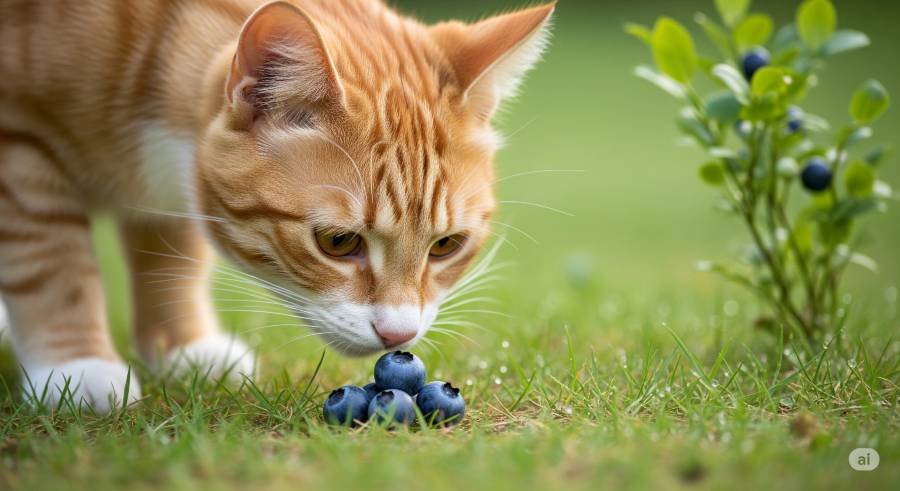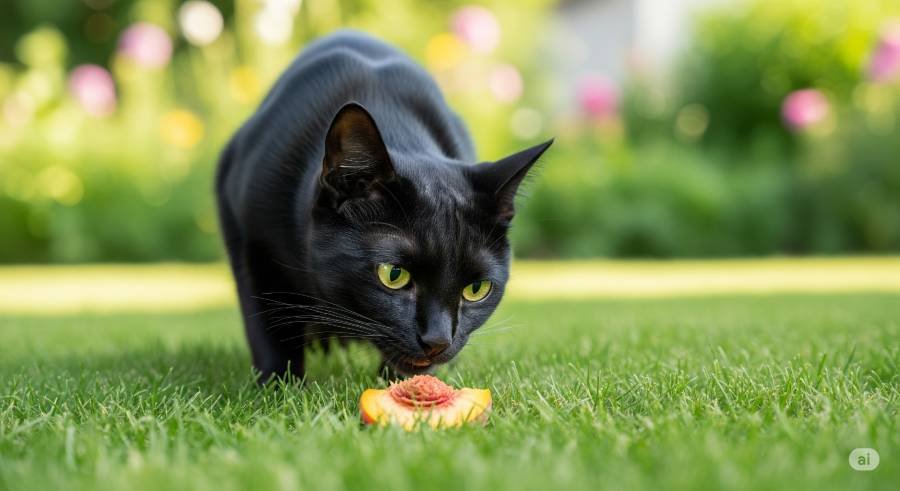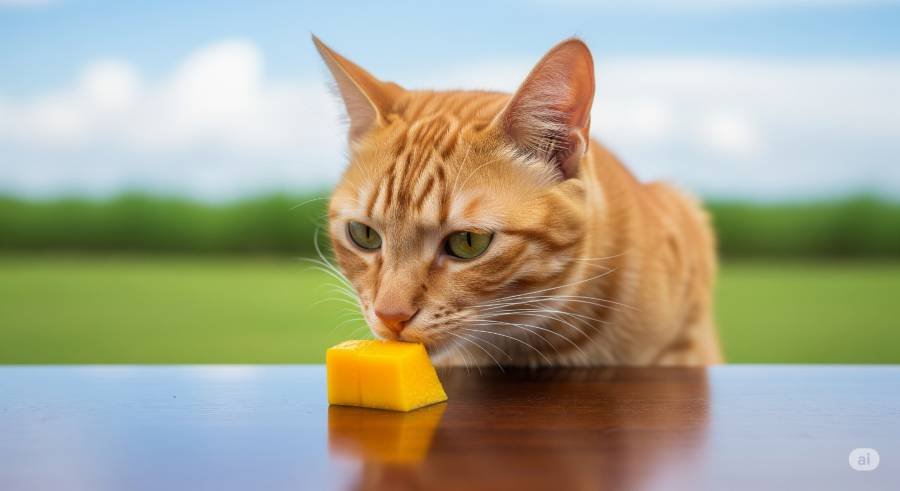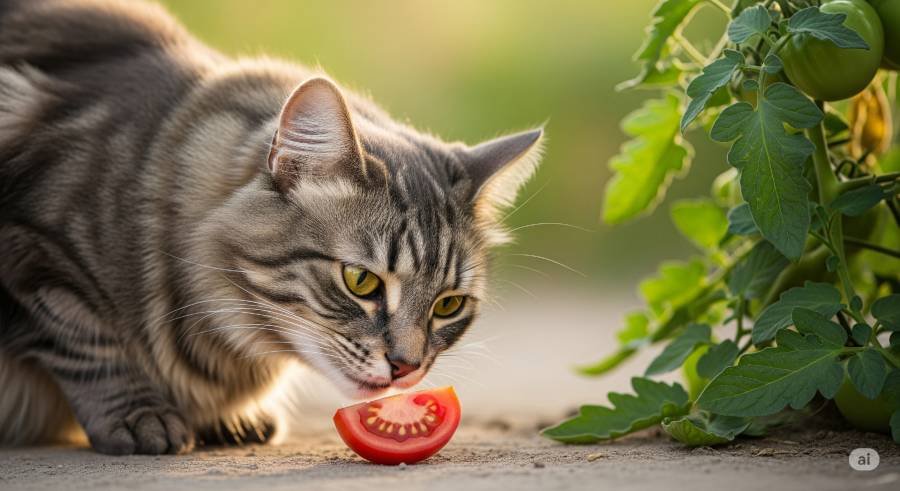Yes, cats can eat vegetables, but only certain types and in small amounts. While cats are obligate carnivores and primarily need a meat-based diet, some vegetables can offer minor nutritional benefits.
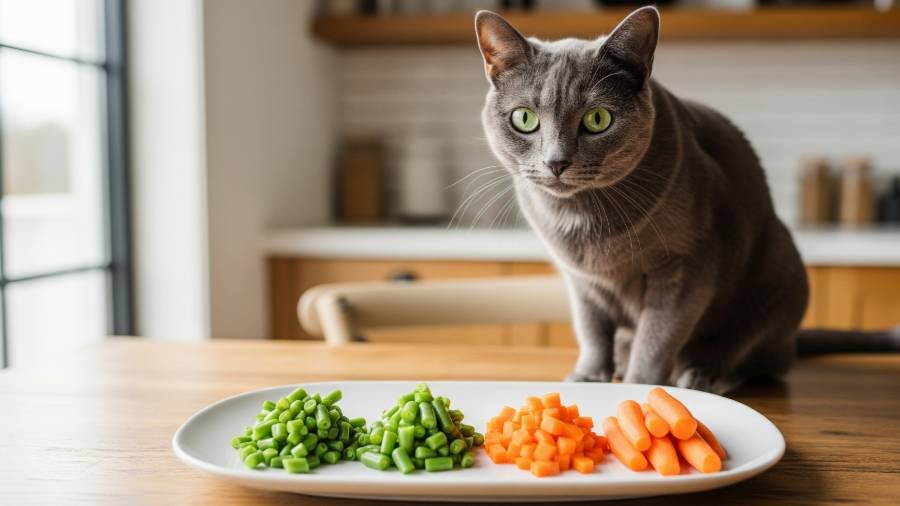
The Carnivorous Nature of Cats
Cats are obligate carnivores. This means their dietary needs are almost exclusively met by animal protein. Their bodies are specifically adapted to digest and utilize nutrients from meat.
A cat’s digestive system is shorter and more acidic than that of omnivores or herbivores. This makes it efficient at breaking down animal tissues.
Why Some Vegetables for Cats?
Even though cats are carnivores, certain vegetables can provide supplemental fiber and some vitamins.
These can aid digestion in specific ways. However, they should never be a significant part of a cat’s diet. Think of them as occasional treats, not staples.
Safe Vegetables for Cats
Many vegetables are safe for feline consumption in moderation. Always introduce new foods slowly. Monitor your cat for any adverse reactions.
Green Beans
Green beans are a good option. They are low in calories and can be a source of fiber. Offer them cooked and cut into small pieces. This makes them easier for your cat to chew and digest.
Carrots
Cooked carrots are another suitable choice. They contain vitamins and are crunchy. Ensure they are soft and in small pieces to prevent choking.
Peas
Peas are small and soft when cooked. They offer vitamins A and K. They are also a good source of fiber. Make sure they are shelled.
Pumpkin
Plain, cooked pumpkin (not pumpkin pie filling) is excellent for digestive health. It can help with both constipation and diarrhea. It is often recommended by veterinarians for these issues.
Sweet Potatoes
Cooked sweet potatoes can be given in small amounts. They provide dietary fiber. Always cook them thoroughly and mash or cut them into small pieces.
Broccoli
Cooked broccoli, in very small quantities, can be safe. It offers some vitamins. However, its strong flavor might not appeal to all cats.
Spinach
Spinach can be given sparingly. It is rich in vitamins and minerals. However, it contains oxalates, which can be problematic for cats prone to urinary tract issues.
Cucumbers
Cucumbers are mostly water. This makes them a hydrating snack. Ensure they are peeled and cut into small pieces. They are generally safe.
Lettuce
Lettuce is another water-rich vegetable. It offers minimal nutritional value but can be a safe, crunchy treat.
Vegetables to Avoid
Some vegetables are toxic or harmful to cats. It is crucial to know which ones to keep away from your feline friends.
Onions, Garlic, Chives, and Leeks
These alliums are highly toxic to cats. They can damage red blood cells, leading to anemia. Even small amounts can be dangerous. Avoid them completely.
Tomatoes (Green Parts)
Ripe red tomatoes are generally safe in very small amounts. However, the green parts (stems, leaves, and unripe tomatoes) contain solanine, which is toxic.
Potatoes (Green or Raw)
Raw potatoes and any green parts of potatoes contain solanine. This is toxic to cats. Cooked, plain potatoes in small amounts are generally safe.
Mushrooms
Wild mushrooms can be extremely toxic. It is best to avoid all mushrooms, even store-bought ones, as some can cause digestive upset.
Preparing Vegetables for Your Cat
Proper preparation is essential when feeding your cat vegetables. Always wash vegetables thoroughly. This removes pesticides and dirt.
Cook vegetables until they are soft. Raw vegetables can be difficult for a cat’s digestive system to process. They can also pose a choking hazard. Cut them into small pieces. This makes them easier to swallow and digest.
Avoid adding any seasonings. Salt, butter, oils, and spices can be harmful to your cat. Plain, cooked vegetables are best.
The Role of Vegetables in a Cat’s Diet
Vegetables should never replace a significant portion of your cat’s commercial cat food or meat-based diet. Their primary nutritional needs are met through high-quality cat food. This food is specifically formulated for their carnivorous requirements.
Small amounts of vegetables can supplement their diet. They can offer additional fiber, which can help with hairballs or occasional constipation. They also provide a small amount of vitamins and minerals.
However, the nutritional benefits from vegetables are minimal compared to what they get from meat. Cats cannot efficiently absorb all nutrients from plant matter.
Potential Health Benefits
While not a primary food source, certain vegetables can offer some health benefits:
- Fiber: Aids in digestion and can help prevent hairball issues. It supports a healthy digestive system.
- Hydration: Water-rich vegetables like cucumber can contribute to a cat’s water intake. This is beneficial for overall health and urinary tract health.
- Vitamins and Minerals: Some vegetables offer small amounts of essential vitamins and minerals. These can boost the immune system.
How Much and How Often?
Moderation is key. Offer vegetables as an occasional treat. A few small pieces once or twice a week is sufficient. Too many vegetables can cause digestive upset, such as diarrhea or vomiting. Always introduce new foods gradually. This allows your cat’s digestive system to adjust.
Observe your cat for any signs of discomfort. If they show any adverse reactions, stop feeding them that particular vegetable. Consult your veterinarian if symptoms persist.
Consulting Your Veterinarian
Before making significant changes to your cat’s diet, always consult your veterinarian. They can provide personalized advice based on your cat’s age, health, and specific needs.
They can also help you understand the appropriate amounts and types of human food, including vegetables, that are safe for your cat. This ensures your cat’s diet remains balanced and complete.
The Importance of Commercial Cat Food
High-quality commercial cat food is formulated to provide all the essential nutrients your cat needs. This includes taurine, an amino acid crucial for heart health and vision. Cats cannot synthesize taurine. They must obtain it from animal products.
A balanced cat’s diet primarily consists of meat-based protein, fats, and essential vitamins and minerals. While vegetables can offer some minor benefits, they cannot fulfill these core requirements. Feeding your cat a proper cat food ensures they receive all necessary nutrients. This helps prevent health problems.
So, can cats eat vegetables? Yes, some vegetables can be a safe and occasional addition to a cat’s diet. Always choose safe options, prepare them properly, and offer them in small amounts.
Remember, cats are obligate carnivores. Their diet should always be primarily meat-based. Vegetables are treats, not a meal. Prioritize high-quality cat food for their main nutritional intake.
Always consult your veterinarian for guidance on feeding your feline friends.
